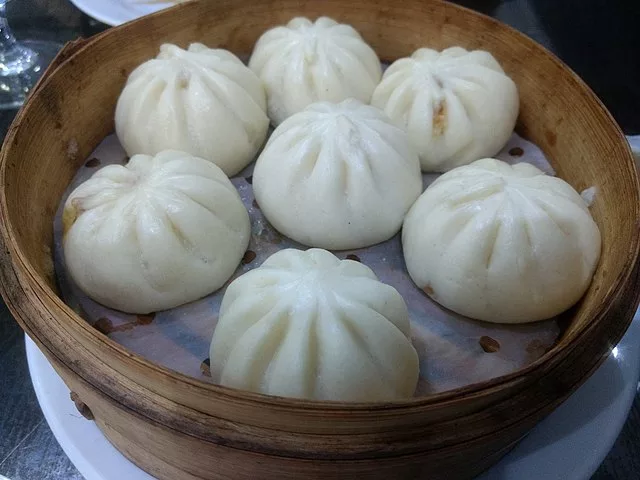
Chinese Filipino Food When it comes to Filipino cuisine, it’s not uncommon to see the influence of different cultures. One of the most significant contributors to the development of Filipino food is China. The Chinese have been living in the Philippines for centuries, and their culture has become deeply ingrained in the Filipino way of life. Today, Chinese-Filipino cuisine is a unique and flavorful fusion of two cultures that is celebrated by many.
History of Chinese-Filipino Cuisine
The relationship between China and the Philippines dates back to ancient times. Trade and commerce between the two nations began as early as the 9th century. The Chinese merchants brought with them their food, culture, and traditions, which eventually made their way into Filipino cuisine.
The Chinese started migrating to the Philippines in significant numbers during the Spanish colonial period. They were brought to the country to work in the tobacco and sugar plantations, and many of them settled in the Philippines permanently. Over time, Chinese and Filipino cultures began to mix, resulting in a fusion of Chinese and Filipino cuisines.
Chinese-Filipino food has since become an integral part of Filipino culture. It’s commonly found in Filipino households, restaurants, and even street food stalls. Chinese-Filipino cuisine has evolved to become a unique style of cooking that blends traditional Chinese techniques and ingredients with Filipino flavors and ingredients.
Key Ingredients and Techniques
One of the hallmarks of Chinese-Filipino cuisine is the use of various ingredients and techniques that are specific to both cultures. Here are some of the key ingredients and techniques used in Chinese-Filipino cooking:
- Soy Sauce
Soy sauce is one of the essential ingredients in Chinese-Filipino cuisine. It’s used as a marinade, seasoning, and dipping sauce. Filipino soy sauce is darker and sweeter than its Chinese counterpart, reflecting the Filipino preference for sweet and savory flavors.
- Oyster Sauce
Oyster sauce is another popular ingredient in Chinese-Filipino cooking. It’s made from oysters, soy sauce, and sugar and is commonly used as a seasoning in stir-fry dishes.
- Rice
Rice is a staple food in both Chinese and Filipino cultures, and it’s used in many Chinese-Filipino dishes. It’s typically steamed or fried and served as a side dish.
- Noodles
Noodles are also commonly used in Chinese-Filipino cuisine. Filipino-style noodles are thinner and more delicate than Chinese noodles, reflecting the Filipino preference for softer textures.
- Stir-Frying
Stir-frying is a cooking technique that’s commonly used in Chinese-Filipino cuisine. It involves cooking ingredients over high heat in a wok or frying pan, resulting in a quick and flavorful meal.
- Dim Sum
Dim sum is a style of Chinese cuisine that consists of small, bite-sized portions of food served in bamboo baskets. It’s a popular Chinese-Filipino food that’s often served during brunch or as a snack.
Popular Chinese-Filipino Dishes
Chinese-Filipino cuisine encompasses a wide range of dishes, each with its unique flavor and style. Here are some popular Chinese-Filipino dishes that you should try:
- Pancit
Pancit is a Filipino-style noodle dish that’s typically made with rice noodles, meat, and vegetables. It’s commonly served during special occasions, such as birthdays and weddings.
- Lumpia
Lumpia is a Filipino-style spring roll that’s typically filled with meat, vegetables, and sometimes cheese. It’s a popular appetizer or snack and is often served with a sweet and sour dipping sauce.
- Siopao
Siopao is a Filipino-style steamed bun that’s typically filled with meat or vegetables. It’s similar to Chinese-style steamed buns but with a Filipino twist. It’s a popular snack or light meal and can be found in many Chinese-Filipino restaurants or street food stalls.
- Adobo
Adobo is a popular Filipino dish that’s also influenced by Chinese cuisine. It’s typically made with meat (chicken or pork) that’s marinated in soy sauce and vinegar and then stewed until tender. It’s a savory and tangy dish that’s often served with rice.
- Kiampong
Kiampong is a Filipino-style fried rice dish that’s cooked with soy sauce, garlic, and other seasonings. It’s often served with fried pork or chicken, boiled egg, and spring onions.
- Tikoy
Tikoy, also known as Nian gao, is a Chinese-Filipino dessert that’s made of glutinous rice flour and brown sugar. It’s often eaten during Chinese New Year as a symbol of good luck and prosperity.
The Future of Chinese-Filipino Cuisine
As Filipino cuisine continues to gain popularity around the world, Chinese-Filipino cuisine is also starting to make its mark. Filipino chefs are now experimenting with Chinese-Filipino flavors and ingredients, creating new and exciting dishes that showcase the fusion of these two cultures.
In recent years, Chinese-Filipino food has also gained a following among younger generations of Filipinos and non-Filipinos alike. Many are drawn to the unique flavors and textures of Chinese-Filipino cuisine, as well as its rich history and cultural significance.
Conclusion
Chinese-Filipino cuisine is a testament to the enduring relationship between China and the Philippines. It’s a fusion of two cultures that has evolved over centuries, resulting in a unique and flavorful cuisine that’s beloved by many. From stir-fry dishes to spring rolls, Chinese-Filipino food offers a wide variety of flavors and textures that are sure to delight your taste buds. So the next time you’re in the Philippines, be sure to try some Chinese-Filipino food and experience the delicious fusion of these two cultures.
